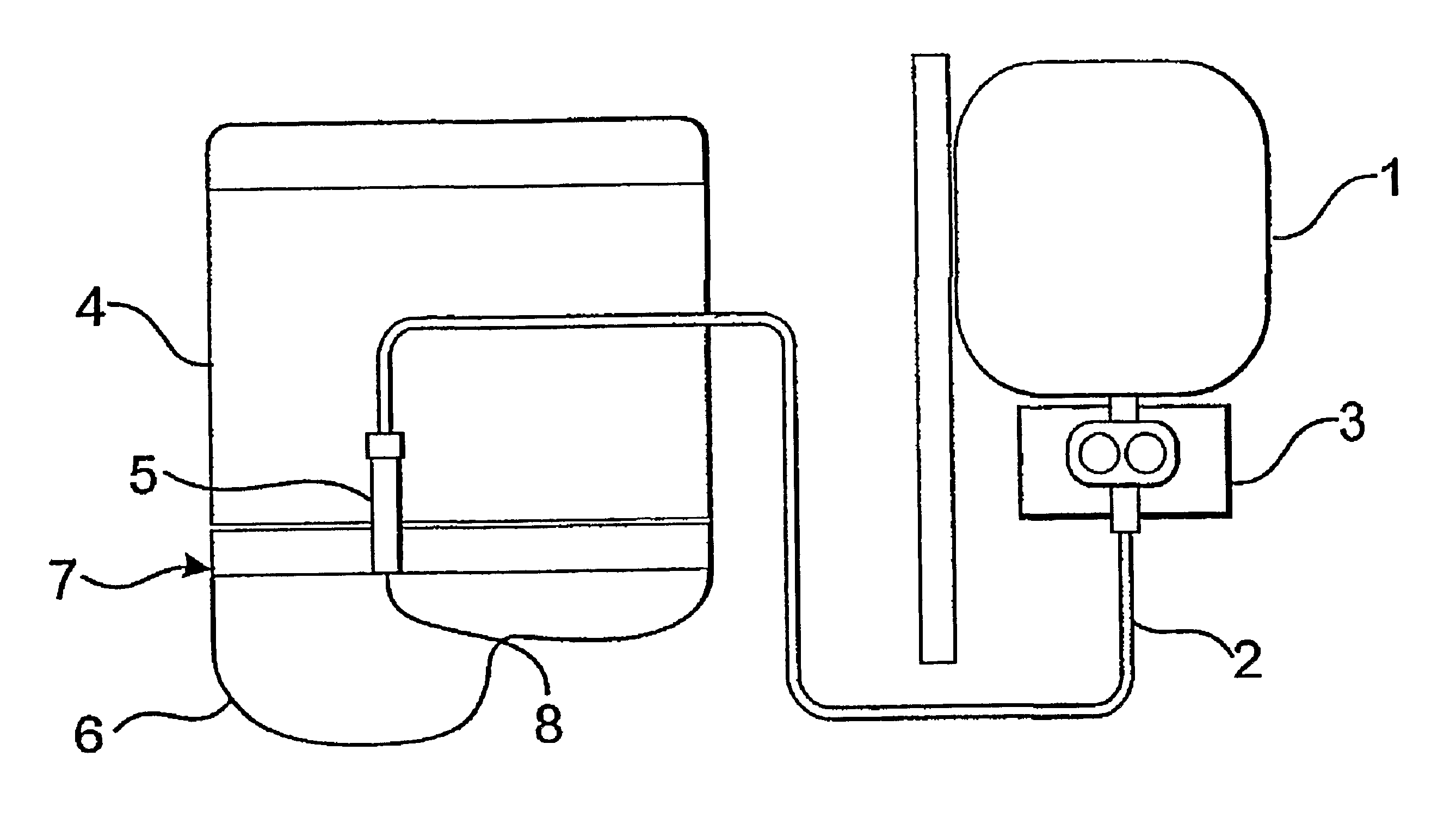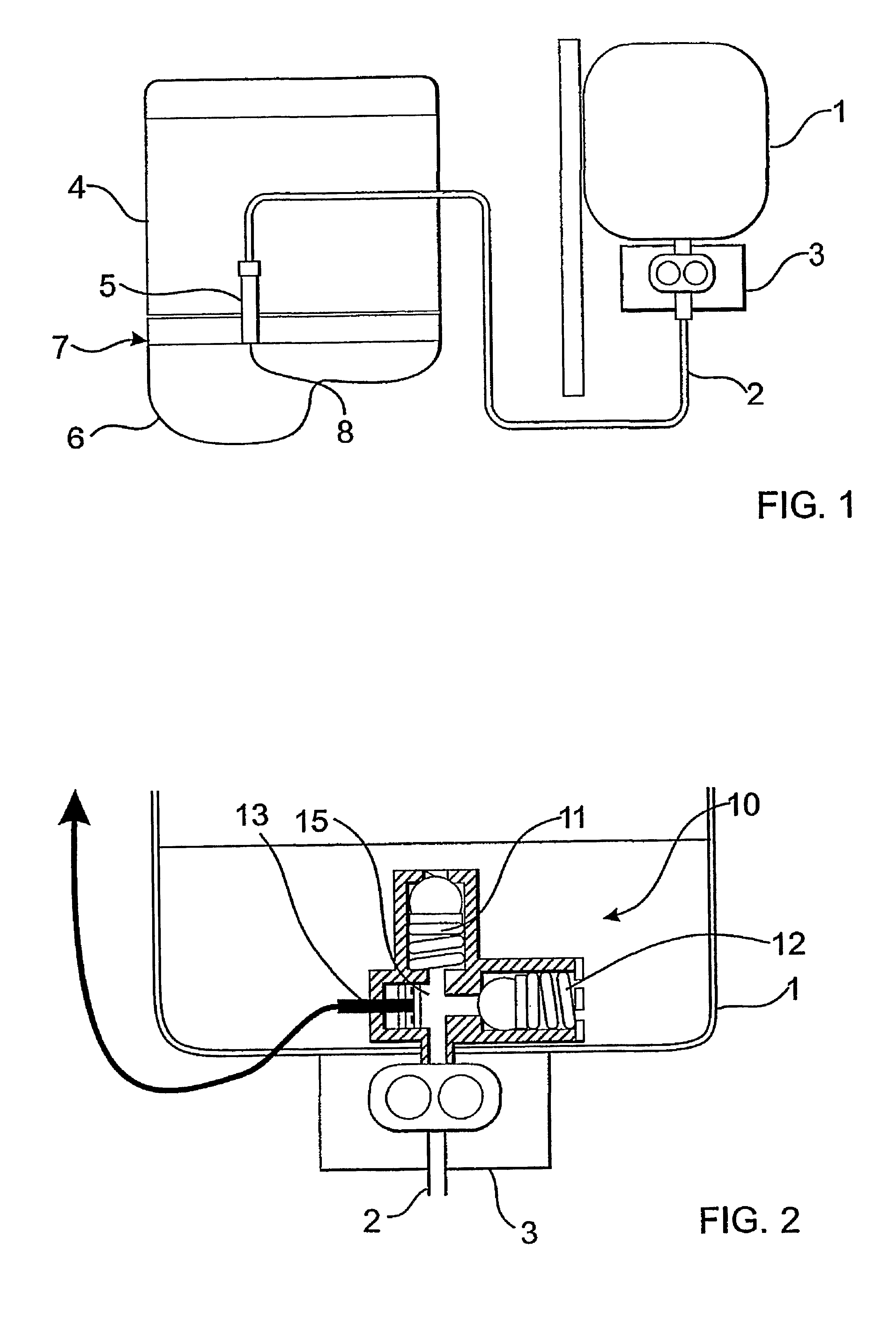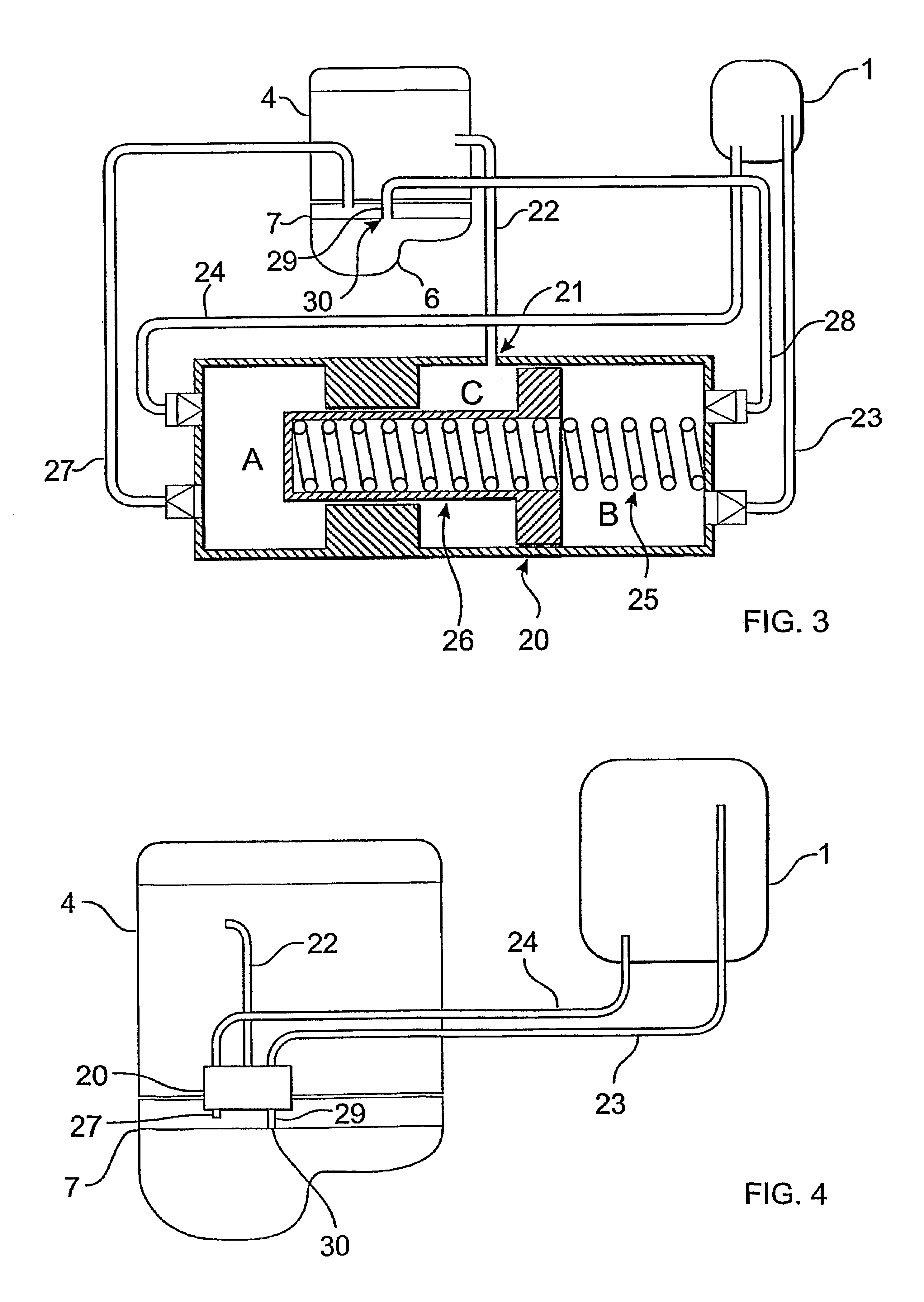Apparatus for controlling a lubrication fluid level
a technology of lubrication fluid and apparatus, which is applied in the direction of lubricant level maintenance, lubrication elements, lubrication indication devices, etc., can solve the problems of lubricant quantity being too large, oil level in the sump not being the same, and oil being topped up, so as to reduce the quantity of lubricant pumped back to the container, prolong the change interval, and minimize the effect of lubricant quantity
- Summary
- Abstract
- Description
- Claims
- Application Information
AI Technical Summary
Benefits of technology
Problems solved by technology
Method used
Image
Examples
Embodiment Construction
[0037]The illustrative embodiments of the invention with developments described below are to be regarded only as examples and are not in any way to limit the scope of protection of the patent claims. In this context, the lubricant is a mineral or synthetic engine oil, but could also be another substance with similar properties.
[0038]The first illustrative embodiment of a system for automatic topping up with oil shown in FIG. 1 consists of a container 1 for oil, a pipe 2 which connects the container 1 to the internal combustion engine 4, and an apparatus 3 for transferring oil. On the engine side, the pipe 2 is connected to a level pipe 5 which is positioned so that its mouth 8 is located in the oil sump 6. The height of the mouth 8 of the level pipe defines the optimum oil level limit 7 in the oil sump 6 for the engine. In order for it to be possible to reliably and accurately define an oil level with a level pipe 5 according to the invention, the mouth 8 of the level pipe is positi...
PUM
 Login to View More
Login to View More Abstract
Description
Claims
Application Information
 Login to View More
Login to View More - R&D
- Intellectual Property
- Life Sciences
- Materials
- Tech Scout
- Unparalleled Data Quality
- Higher Quality Content
- 60% Fewer Hallucinations
Browse by: Latest US Patents, China's latest patents, Technical Efficacy Thesaurus, Application Domain, Technology Topic, Popular Technical Reports.
© 2025 PatSnap. All rights reserved.Legal|Privacy policy|Modern Slavery Act Transparency Statement|Sitemap|About US| Contact US: help@patsnap.com



